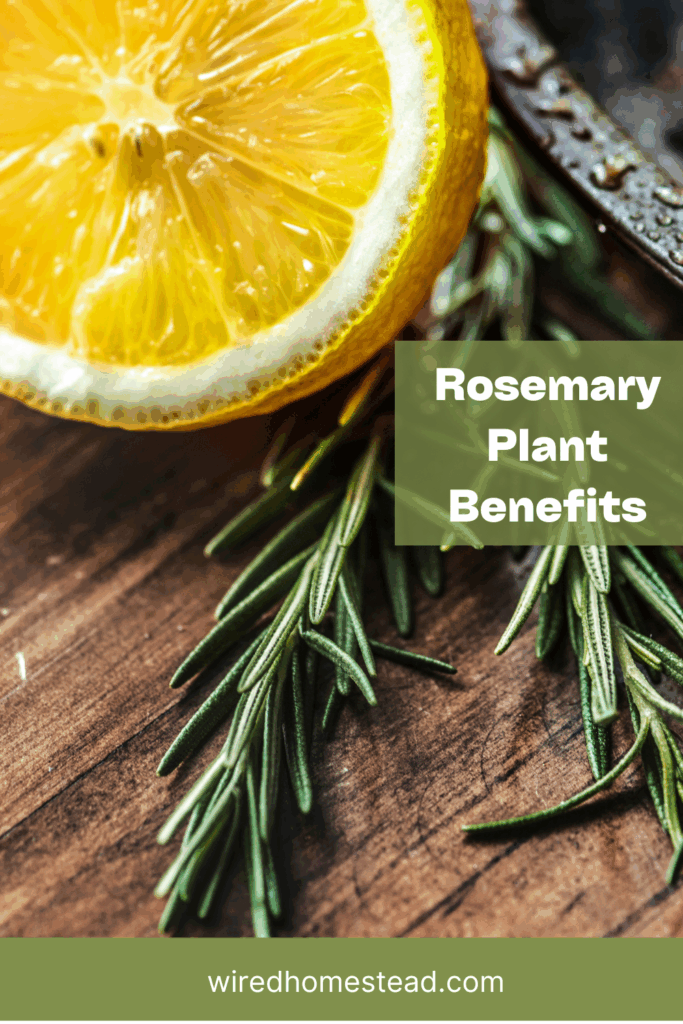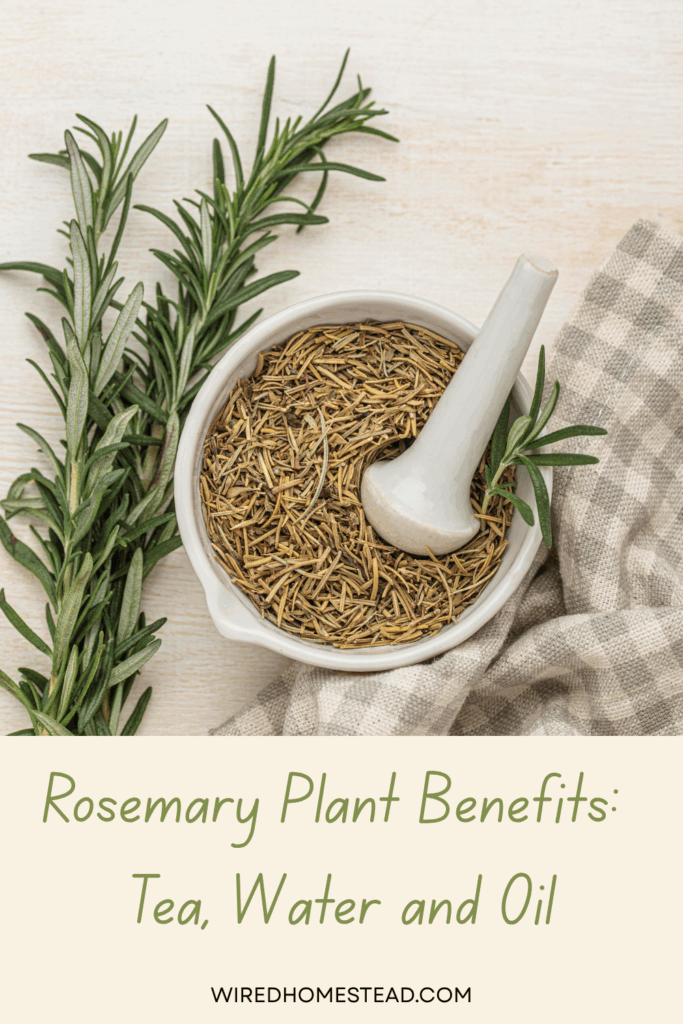Medicinal Properties of Rosemary – Food for the Brain (and More!)
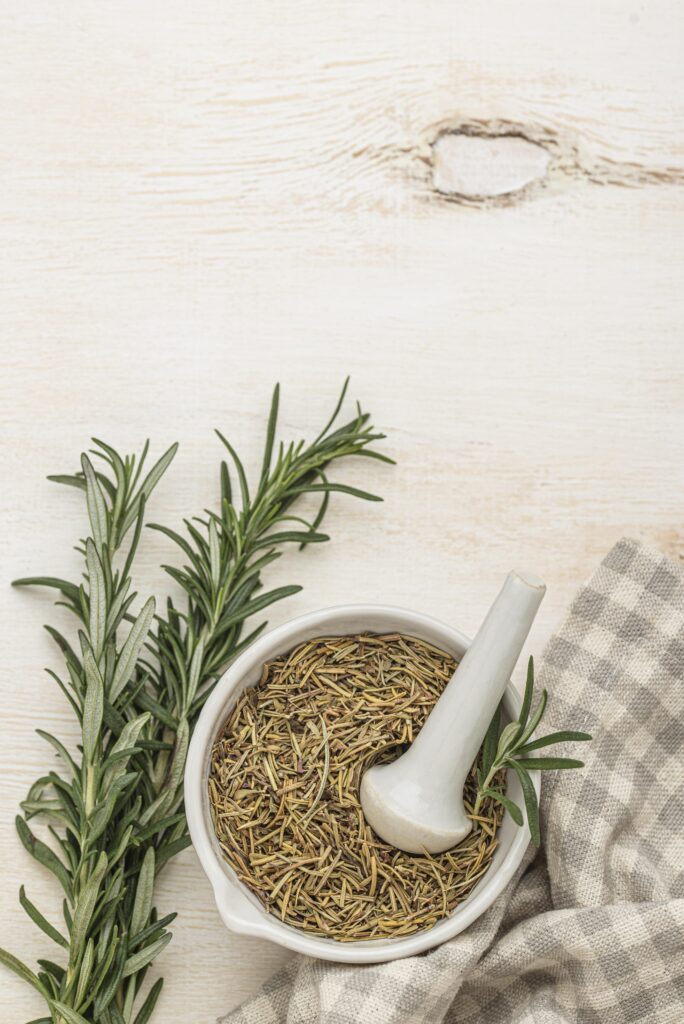
Rosemary is really delicious on chicken, in bread, and even sometimes paired with a sweet pastry if you’re feeling adventurous. But did you know that there are rosemary has medicinal properties as well? The medicinal properties of rosemary mean it’s more than just a plant in your kitchen, but a powerful one to have in your herbal apothecary as well.

An Overview of the Rosemary Plant
Rosemary is a member of the mint family, characterized by a square stem. You’ll find that many plants in the mint family, if not most, have some medicinal properties worth learning about.
The scientific name for rosemary is Rosemarinus officinalis. It’s important to note the officinalis part of the name. If you see this, or officinale, that means that when the plant was originally given it’s scientific name, the plant was used as a medicinal herb. That doesn’t mean plants without that in their name aren’t medicinal, it just means that the plants with the name were some of the earliest herbs used as herbal medicine. Rosemary has been healing people for many hundreds of years!
Rosemary has a very distinct smell, it’s very strong and a bit pine like. Once you’re familiar with it’s scent, you’ll immediately be able to identify the plant. The strong smell comes from the essential oils (also called volatile oils) in the plant. One small brush with the plant and you’ll smell like rosemary all day!
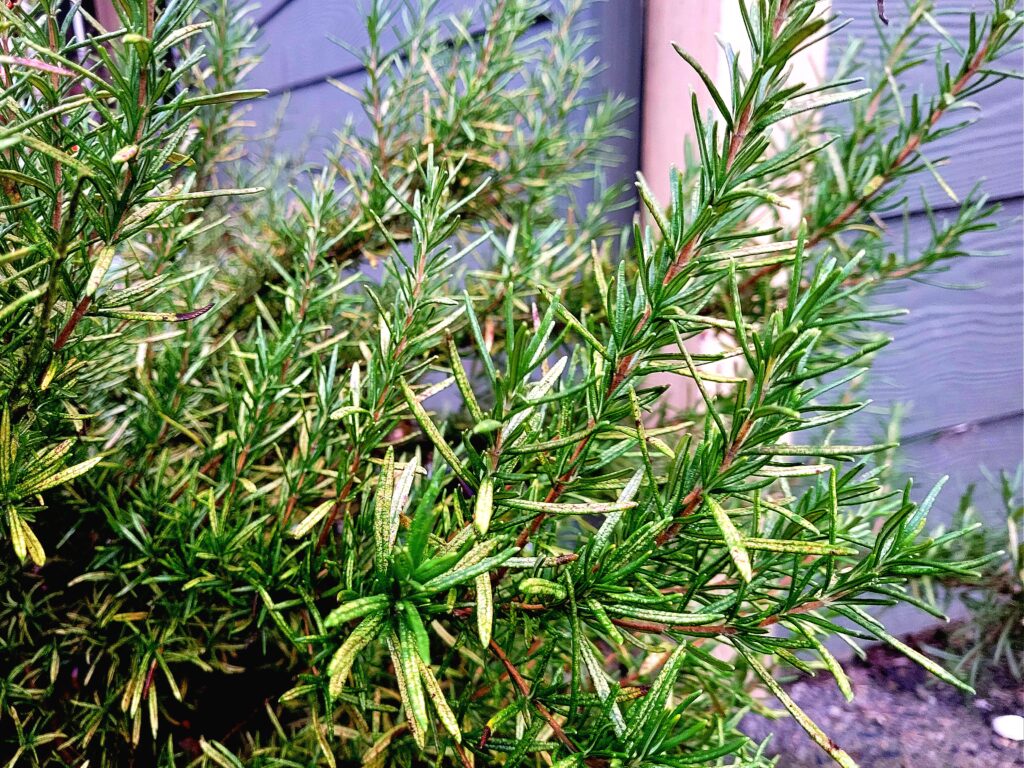
The rosemary plant grows as a woody shrub and has leaves that more closely resemble a pine tree than other members of it’s mint family. The leaves contain the compounds that make the plant medicinal and give it the flavor for culinary purposes. However, when I make a tincture or oil infusion with rosemary, I don’t bother taking out the small stem that the leaves grow on.
The needle-like leaves can have a bluish green color to them, which can also turn a little silvery or yellow as it ages. The plant has very small flowers that can vary in color: blue, purple, pink, and white are all possible flower colors.

Medicinal Properties of Rosemary
*I am not a doctor and is this not medical advice. Please consult your physician before using herbal medicine.
Food for the Brain and Nervous System
One of the best known medicinal properties of rosemary is it’s ability to help protect and prevent damage to the nervous system and modulate the signaling between nerves. This means that rosemary may help with memory function, nervous depression or anxiety, mental fatigue, and degenerative disorders of the nervous system. Studies show it may help soothe the nerves and help stimulate the brain and nervous system.
Many herbal remedies that promote helping with memory or cognitive function contain an extract of rosemary. The plant is a very good antioxident, which means it can help clear free radicals from your body. Free radicals are a major cause of many of the degenerative issues I mentioned above, as well as devastating diseases such as cancer.
One study found that rosemary essential oil can alter the strength of signals sent in the nervous system. This characteristic is helpful in protecting and healing the nervous system, as well as helping to regulate pain. I don’t promote the use of essential oils, so I would encourage the use of the whole plant. The plant contains the oils so you still get the benefits but without the possible irritation and side effects of taking a concentrated dose of the very potent oils.
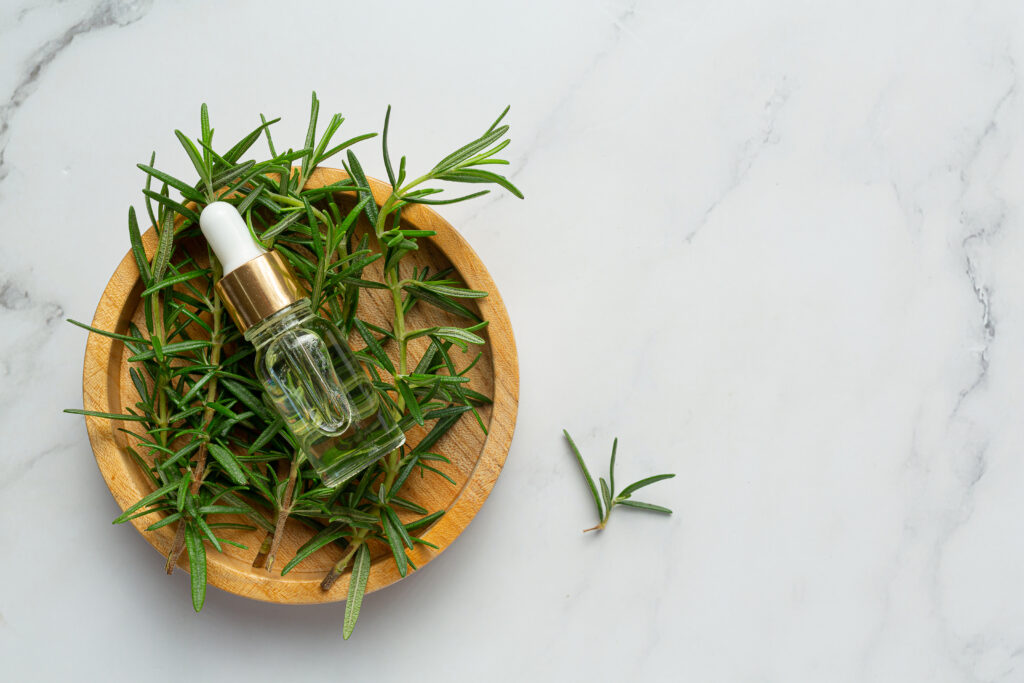
Other Medicinal Properties of Rosemary
Rosemary is praised for being good for the brain, but it can also do other amazing things for your body. The plant can help with digestion by helping the liver secrete bile. The increase in bile can help with the breakdown of your food and the removal of toxins from your body. It can also help relieve gas and diarrhea.
It’s an anti-inflammatory that can help with wound care and other inflammatory responses in the body. It also has some anti-bacterial properties that are useful for wound care as well.
Rosemary Water and Oil for Hair Growth
Rosemary’s anti-inflammatory properties and ability to increase circulation to the brain is beneficial for hair as well as brain function. Increased circulation help bring oxygen and nutrients to the hair follicles, helping to stimulate growth. The anti-inflammatory actions can also help calm skin irritations on the scalp. These irritations can also contribute to hair loss.
To use rosemary to help stimulate hair growth and reduce hair loss, an oil infusion or strong tea is best. To use oil, take a few drops of rosemary infused oil (see below for instructions) and rub it into your scalp. Leave it there for 20-30 minutes before washing out. Repeat this at least a few times a week.
If using a strong tea instead (see instructions below) spray it on the scalp and rub it in. Leave it in for at least 20-30 min and then you can rinse it out.
It may take several weeks before you may see any changes. Don’t give up if after a week you don’t notice any difference. Everyone is different and this may work great for some, but not for others. It’s worth going through the effort if you’re looking to regrow or strengthen your hair!
Non-Medicinal Uses for Rosemary
We’ve talked about what rosemary can do for your body, but it can also help in other ways. As I mentioned in the overview section, rosemary has a very strong smell due to it’s volatile oil content. This smell can help repel flea and ticks for your animals. If you look for natural flea and tick sprays you will likely come across one that’s rosemary scented (peppermint is even more popular). I’ve used Wondercide’s flea and tick spray and it worked wonderful. It killed the fleas on the dog as well as repelled new ones. The downside is you do have to reapply it regularly, it’s not a once a month application and done. You also have a dog running around that will smell like rosemary. If you’re not a fan of the scent, you might not appreciate that!
Fleas and ticks aren’t the only potential outdoor inconveniences rosemary can help with. It can also help protect against UV and gamma radiation. If you make your own sunscreen, rosemary is something worth looking into adding. I’ve never made my own but maybe I should start!
The last thing I want to mention about this versatile plant is that it can also be used to preserve food. Although it would work, I would question how it might change the flavor of the food it’s preserving. Rosemary does have a strong flavor! But on the bright side, you might find that a rosemary flavored bread loaf will last a bit longer than your loaves without rosemary.

How You Can Use Rosemary As A Medicine
There are several ways you can use rosemary as a medicine:
- Eat it
- Make a tea
- Use it as a tincture
- Infuse it in oil or witch hazel
These four ways are going to be my standard answer for how to use herbs as medicine, and are definitely the best ways for culinary herbs like rosemary.
Eating Rosemary
Using it to flavor dishes will help you gain some of it’s medicinal benefits. Cooking does break the nutritional and medicinal properties down some, but you can still enjoy some benefits by eating it. If you eat it raw, you’ll get even more.
Making a Tea to Extract Medicinal Properties
To make rosemary into a tea, take either fresh or dried rosemary and put about a teaspoon per cup into a tea bag or infuser. Poor 8 oz of boiling water over it and cover the cup to keep the steam from escaping. There are special tea mugs you can buy that come with covers, or you can just cover the cup with a small saucer plate like I do.
Let the tea steep for about 10-15 minutes then remove the cover. Take out the rosemary and enjoy your refreshing medicinal tea.
Making a Tincture
Tinctures typically involve alcohol, but can be made with vegetable glycerin or vinegar if you do not consume alcohol. Keep in mind that when you are taking a tincture, you are taking such small amounts that it is impossible to feel any affects of the alcohol.
I make a tincture by using 100 proof vodka. Fill a jar with fresh rosemary. I like to cut it up into smaller pieces so I can fit more in and have more surface area for the alcohol to extract from. I feel it’s important that the plant be fresh so it still retains all of it’s water and alcohol soluble properties. Some people like to use dry plant matter, but I don’t think it’s as potent since it’s lost it’s water soluble properties in the drying process. Use your own judgement on what’s best for you. Make sure you fill the jar to the top with rosemary, don’t pick a jar that’s larger than the amount of plant material you have. It doesn’t matter what jar you use, just make sure it has a lid that is tight.
When your jar is full of rosemary, poor the alcohol over it until it reaches the brim of the jar. You may have to let it sit for a minute before the alcohol makes it into all the nooks and crannies. Seal the jar with the lid and sit it in a cool dark place for 6-8 weeks.
When it’s ready, strain out the plant material and your tincture is ready for use.
Tinctures are pretty powerful medicine, so start slowly when taking it. Start with just a few drops several times a day, and work up until you reach the number of drops your body needs to feel the medicinal affects.
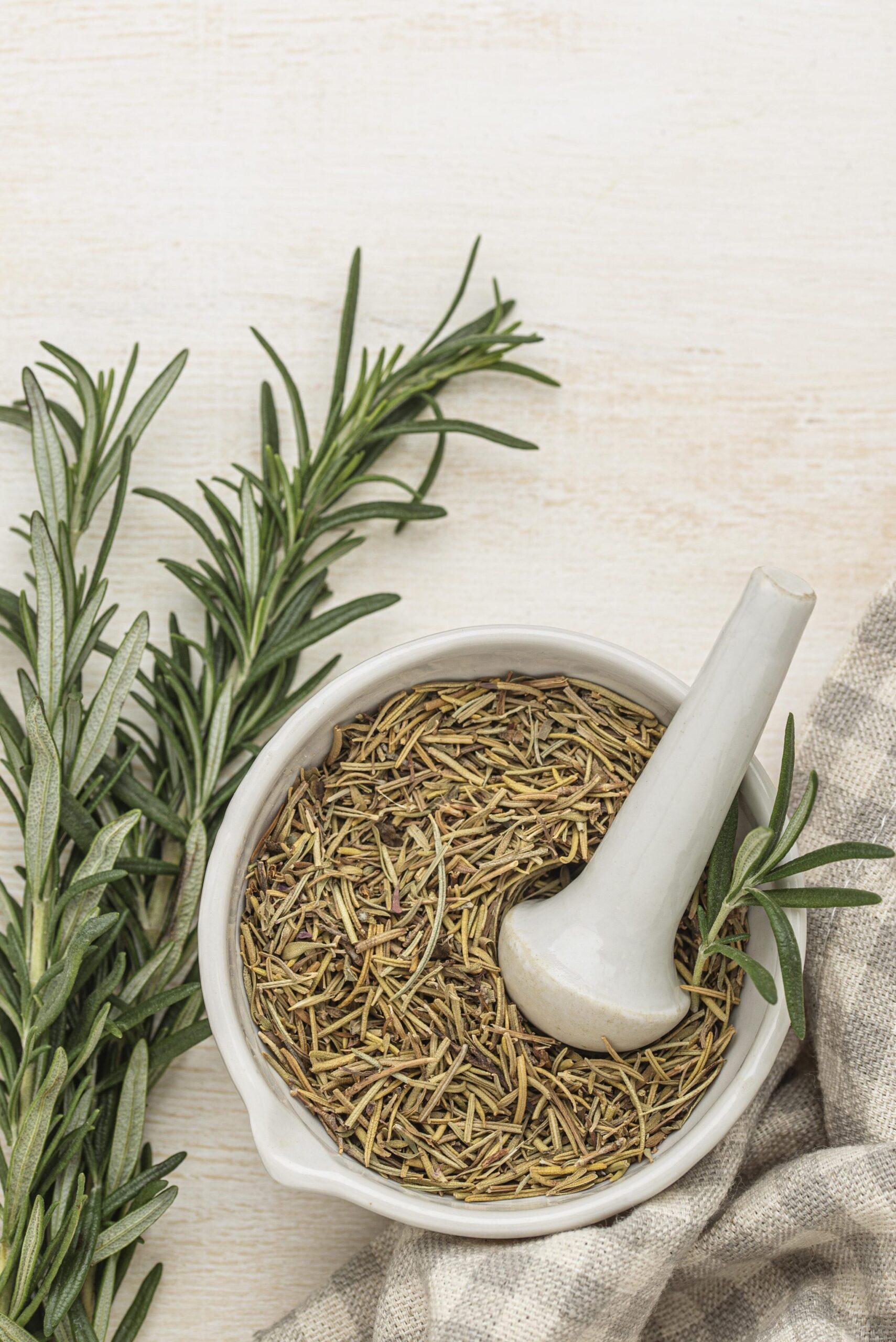
Making an Oil or Witch Hazel Infusion
An oil infusion is best used to make a salve for use to help heal wounds, but of course you can always use the oil to cook with too! My favorite oil to use is avocado oil, but you can use a pure olive oil, grapeseed oil, or basically any oil that isn’t soy or canola based. I wouldn’t recommend using either of those due to their inflammatory properties.
Oil infusions should be made with dry plant material only. Because oil and water are the perfect breeding ground for bacteria, if you use fresh plant material your oil is going to end up growing mold.
Fill a jar up with dried rosemary, you can use the stem and all you don’t have to only use the leaves. Just like with a tincture, fill the jar full and cut it into smaller pieces for more surface area.
Pour the oil over the plant material up to the rim of the jar. Cap it tight and place it in a warm, dark place for 6 weeks. After 6 weeks, strain out the plant material and your oil is ready to go!
Follow the same steps if you’re infusing rosemary in witch hazel to make a bug spray.
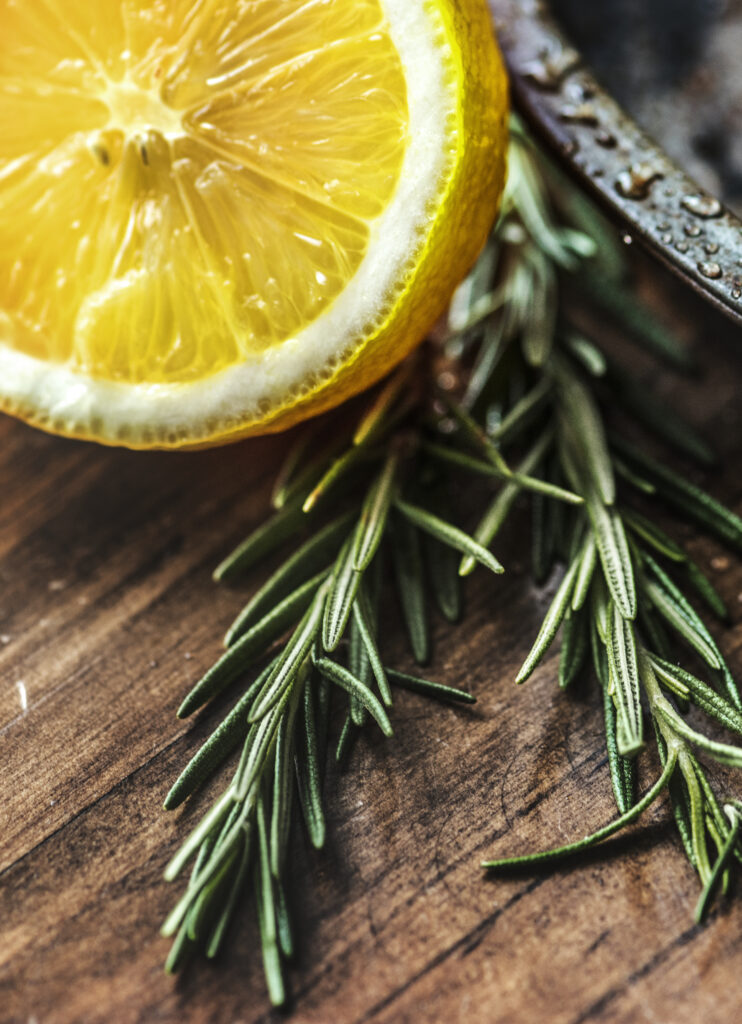
Sources:
AN IN-DEPTH REVIEW ON THE MEDICINAL FLORA ROSMARINUS OFFICINALIS (LAMIACEAE)
Medicinal Plants of the Family Lamiaceae in Pain Therapy: A Review
Rosmarinus officinalis L.: an update review of its phytochemistry and biological activity
Antibacterial and resistance modifying activity of Rosmarinus officinalis
Other Medicinal Herbs to Explore:
Pin For Later:
